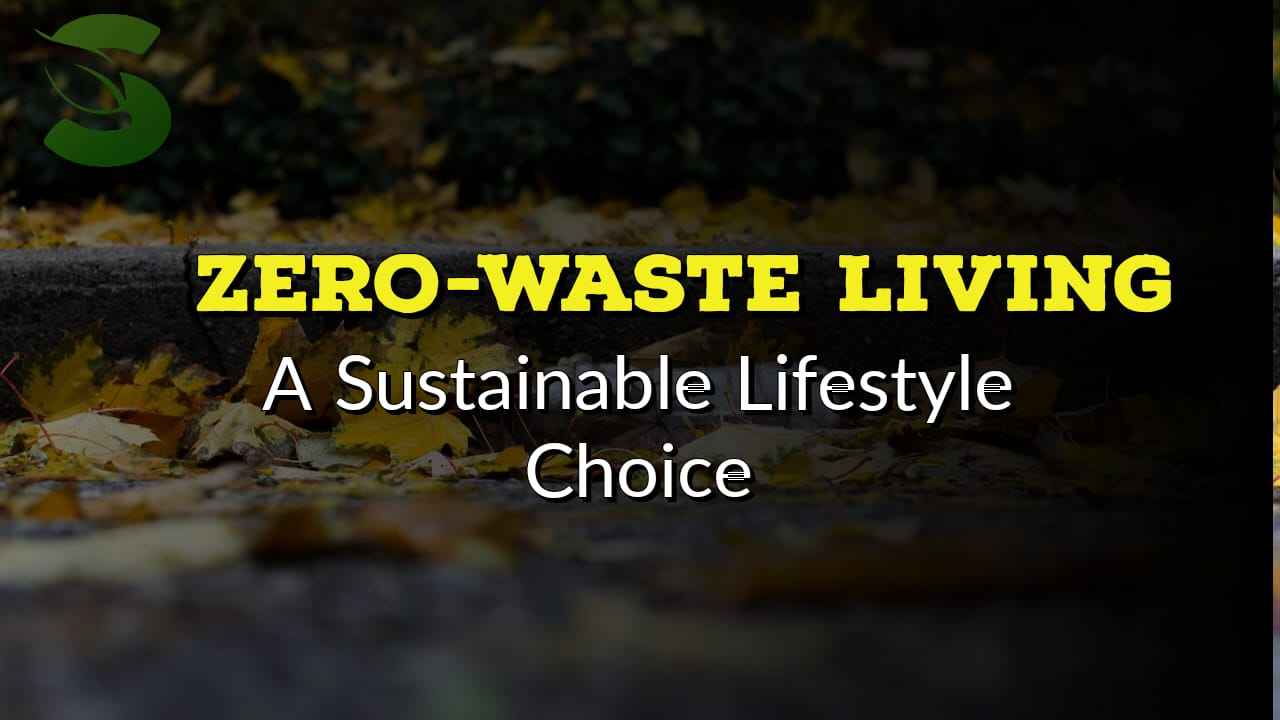In moment’s world, the conception of sustainability has gained immense significance. As we face the pressing issue of climate change and its dire consequences, individualities are looking for ways to make a positive impact on the terrain. Zero- Waste Living has surfaced as a important and practical result. In this comprehensive companion, we’ll claw into every aspect of Zero- Waste Living, from its core principles to practical tips for embracing this eco-friendly life.
What is Zero-Waste Living?
Zero- Waste Living is a life choice aimed at minimizing waste generation and reducing our environmental impact. It involves conscious opinions and diurnal practices that prioritize sustainability and waste reduction. By espousing this life, individualities commit to transferring as little waste as possible to tips or incinerators.
Embracing a Zero-Waste Mindset
The trip to Zero- Waste Living begins with a shift in mindset. It’s about redefining our consumption patterns and understanding the environmental consequences of our choices. This mindset shift is the foundation of a sustainable life.
The Core Principles
- Refuse: The first principle of Zero- Waste Living is to refuse what you don’t need. By saying no to single- use plastics, inordinate packaging, and gratuitous particulars, you are formerly making a significant impact.
- Reduce: To reduce waste, concentrate on simplifying your life. Buy only what you need, and conclude for products with minimum packaging. This reduces the coffers used in product and the waste generated.
- Reuse: Embrace reusable alternatives whenever possible. Use cloth bags, stainless steel containers, and glass jars to reduce reliance on disposable items.
- Recycle: While recycling is important, it should be your last resort. Be aware of what can and cannot be recycled in your area, and make an effort to recycle properly.
- Rot: Composting organic waste is an essential part of Zero-Waste Living. It enriches the soil and reduces the burden on landfills.
Tips for a Zero-Waste Kitchen
The kitchen is a hotspot for waste generation. Here are some practical tips to help you achieve a Zero-Waste Kitchen:
- Buy in Bulk: Purchase non-perishable items like grains, pasta, and spices in bulk to reduce packaging waste.
- Choose Reusable Containers: Use glass or stainless steel containers for food storage instead of disposable plastic bags or containers.
- Compost Food Scraps: Set up a compost bin for fruit and vegetable scraps, coffee grounds, and eggshells.
- Reduce Food Waste: Plan meals carefully to avoid food spoilage and waste. Freeze leftovers for future use.
- Ditch Plastic Wrap: Replace plastic wrap with reusable beeswax wraps or silicone lids.
Zero-Waste Living in the Bathroom
The bathroom is another area where you can make eco-friendly choices:
- Swap to Solid Toiletries: Use solid soap, shampoo bars, and toothpaste tablets to eliminate plastic bottles.
- Choose Reusable Razors: Opt for safety razors with replaceable blades instead of disposable razors.
- Reduce Water Waste: Install water-saving fixtures to minimize water usage during showers and while brushing your teeth.
- DIY Personal Care Products: Consider making your own personal care products, like toothpaste and deodorant, to reduce packaging waste.
Sustainable Fashion and Zero-Waste Living
The fashion industry is notorious for its environmental impact. Here’s how you can practice sustainable fashion within the realm of Zero-Waste Living:
- Shop Secondhand: Explore thrift stores and online platforms for secondhand clothing. This reduces the demand for new items and extends the lifespan of existing ones.
- Choose Quality Over Quantity: Invest in high-quality, timeless pieces that will last longer and withstand fashion trends.
- Repair and Upcycle: Learn basic sewing skills to repair clothing or upcycle items into something new and unique.
Frequently Asked Questions (FAQs)
Is Zero-Waste Living Expensive?
Zero-Waste Living can initially require some investment in reusable items like glass jars and stainless steel containers. However, in the long run, it can save you money by reducing the need to purchase disposable products repeatedly.
Can I Practice Zero-Waste Living in a Small Space?
Yes, Zero-Waste Living is possible in small spaces. You can maximize storage efficiency and focus on reducing unnecessary items to make the most of your space.
How Can I Encourage My Family to Embrace Zero-Waste Living?
Lead by example. Start with small changes, like using reusable shopping bags, and gradually introduce your family to the concept of Zero-Waste Living. Explain the environmental benefits and involve them in the process.
Is Zero-Waste Living Time-Consuming?
Transitioning to Zero-Waste Living may require some initial effort, but as you establish new habits, it becomes second nature and often saves time by simplifying your life.
Can I Still Enjoy Takeout and Dining Out While Practicing Zero-Waste Living?
Yes, you can enjoy takeout and dining out while minimizing waste. Carry your own reusable containers and utensils, and politely ask restaurants to use them for your order.
How Can I Dispose of Items I No Longer Need in a Zero-Waste Manner?
Consider donating, selling, or upcycling items you no longer need. Avoid sending them to landfills whenever possible.
Conclusion
Zero-Waste Living is not just a trend; it’s a sustainable lifestyle choice that benefits both the environment and your well-being. By adopting the principles of refusing, reducing, reusing, recycling, and composting, you can significantly reduce your waste footprint. Make conscious choices in every aspect of your life, from the kitchen to the bathroom to your fashion choices, and you’ll be contributing to a cleaner, greener future for all.
ALSO READ |The Ultimate Guide to Sustainable Living: Tips and Tricks to Reduce Your Impact on the Planet








1 thought on “Zero-Waste Living: A Sustainable Lifestyle Choice”